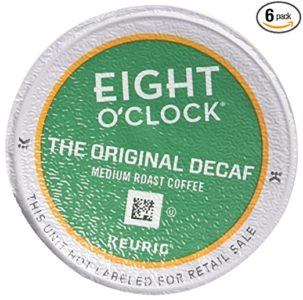

The “Roslius Process” involved steaming coffee beans with a brine solution (i.e., water, saturated with salt) and then using the organic chemical compound benzene as a solvent to extract the caffeine. Legend has it that his quest for decaffeinated coffee was motivated by the belief that excessive coffee drinking had poisoned his father. The first commercially successful decaffeination process was invented by the German coffee merchant Ludwig Roselius in 1903 and patented in 1906. These agents help speed up the process and minimize the “washed-out” effects that water alone would have on the taste of decaf coffee. Therefore, all decaffeination processes use a decaffeinating agent (such as methylene chloride, activated charcoal, CO 2, or ethyl acetate). Water is not a “selective” solvent and therefore removes other soluble substances, like sugars and proteins, as well as caffeine. However, water by itself is not the best solution for decaffeination.


Eight o clock coffee caffeine content manual#
The flavor you feel, the feeling of grinder in your hands - it’s a great aesthetic pleasure and if you want to try it, make sure to choose a good manual grinder.Let’s begin by stating the obvious. There is something intimate and magical when you grind coffee beans.

Roasting coffee darkly destroys some of the healthy aspects of the bean. The lighter the roast, the more health-promoting phenols the beans will retain.
Eight o clock coffee caffeine content free#
Purity Coffee is a brand that’s certified free from pesticides, mycotoxins, and fungus. This helps assure the beans are free from pesticides, herbicides, and fungicides. There are many of these types of certifications around the world and they should be listed on the bag or on the company’s website. Look for Fair Trade and Rain Forest Alliance certifications. Make sure the coffee is grown in a sustainable and ethical manner.


 0 kommentar(er)
0 kommentar(er)
